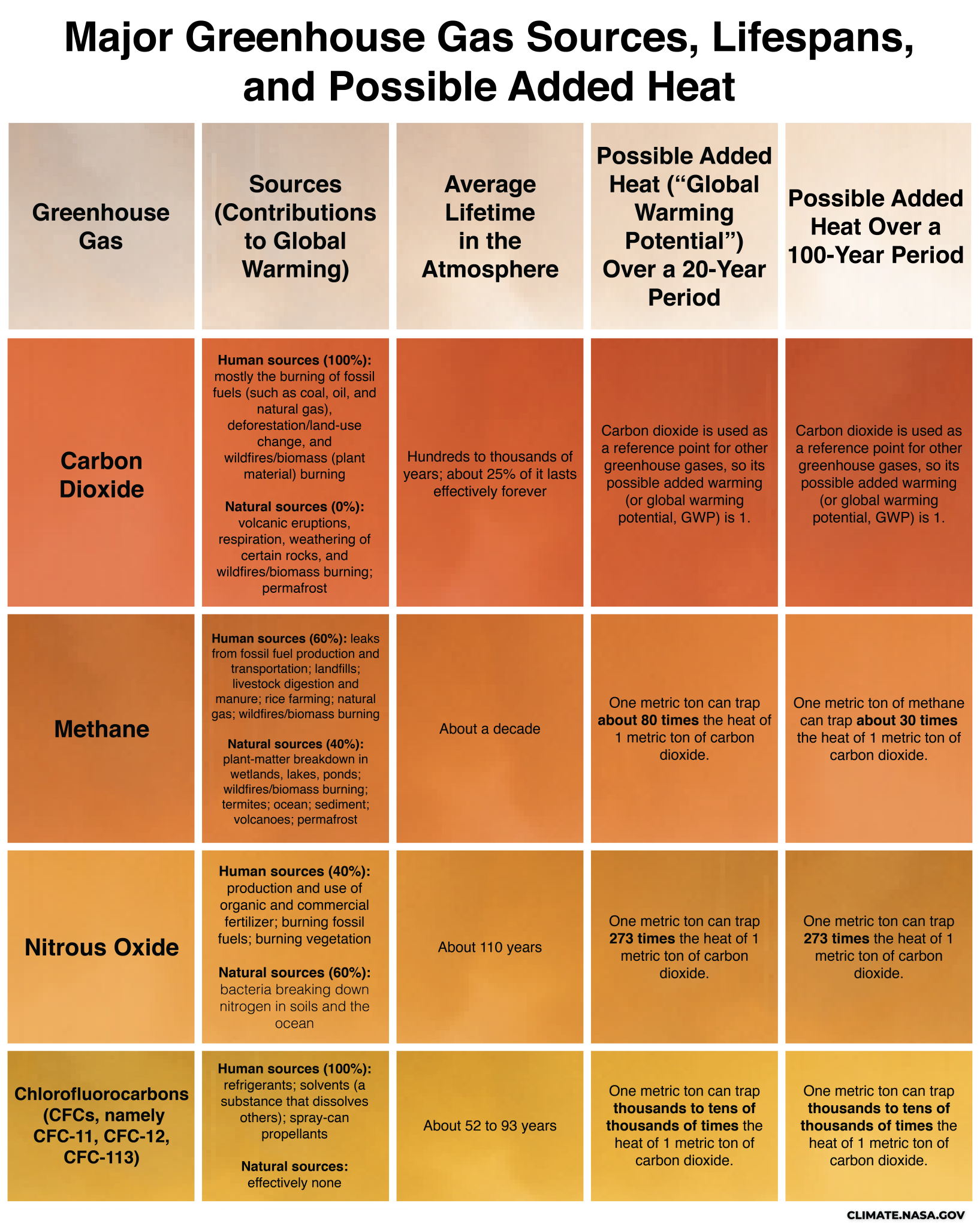Graphic: Major Greenhouse Gas Sources, Lifespans, and Possible Added Heat
| Credit | NASA/JPL-Caltech |
|---|---|
| Language |
|
June 22, 2023
Human activities have been emitting greenhouse (heat-trapping) gases into the atmosphere since at least 1750 (the Industrial Revolution), and this rate is accelerating. But when these gases enter the atmosphere, they stay for years, creating a time lag between when they arrive and when we see the consequences, which include sea level rise, Arctic sea ice melt, and extreme events.
This table lists the major greenhouse gases causing today’s global warming, their sources, their average lifetimes in the atmosphere, and their possible added heat (“global warming potential”) over a 20- and 100-year period.
NOTE: “Global warming potential” assumes these gases are released equally from their sources, which is not the case in the real world. If that were true, then other greenhouse gases like methane would be much worse for global warming than carbon dioxide due to their stronger heat-trapping ability. Instead, carbon dioxide emissions dwarf those of other greenhouse gases because human activities release more of it. With that said, the table does not list the actual volumes at which these gases are emitted, a factor that helps scientists determine how much climate change they cause.




























